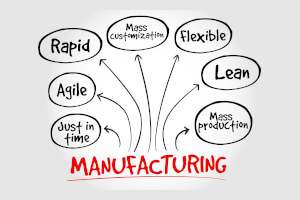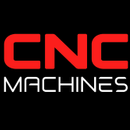From Product Development to Part Production: A Guide to Success

From Product Development to Part Production: A Guide to Success
In today's fast-paced and competitive global market, taking a product from development to production requires a well-coordinated strategy. This involves not only designing and refining the product but also finding the right suppliers who can provide value, quality, and competitive pricing. This article will guide you through the product development process, the steps to transition from development to production, and how to connect with the best suppliers.
What is Product Development?
Product development is the process of creating a new product or improving an existing one to meet customer needs and market demands. It involves several stages, from ideation and design to prototyping, testing, and final production. Successful product development requires collaboration across various disciplines, including engineering, marketing, design, and supply chain management.
Steps Taken from Development to Production
1. Idea Generation and Market Research
- Ideation: The process begins with brainstorming and generating ideas based on market research, customer feedback, and emerging trends.
- Market Research: Conduct market research to understand customer needs, identify competitors, and assess the market potential for the product.
2. Concept Development and Feasibility Analysis
- Concept Development: Refine the best ideas into workable concepts, including sketches, models, and rough prototypes.
- Feasibility Analysis: Evaluate the technical, financial, and operational feasibility of the product concept. This involves assessing production costs, materials, and potential challenges.
3. Design and Prototyping
- Design: Develop detailed designs using CAD software, including specifications for materials, dimensions, and tolerances.
- Prototyping: Create prototypes to test the design's functionality, aesthetics, and manufacturability. This may involve multiple iterations to refine the product.
4. Testing and Validation
- Testing: Conduct rigorous testing to ensure the product meets safety standards, performance criteria, and customer expectations.
- Validation: Validate the product design by gathering feedback from stakeholders, potential customers, and focus groups. Make necessary adjustments before moving to production.
5. Supplier Selection and Sourcing
- Supplier Research: Identify and evaluate potential suppliers based on their ability to deliver quality, value, and competitive pricing. Consider suppliers' capabilities, experience, and track record.
- Request for Quotation (RFQ): Send RFQs to shortlisted suppliers to obtain detailed pricing, lead times, and terms of service.
- Supplier Negotiation: Negotiate contracts with suppliers to ensure favorable terms, including pricing, quality standards, and delivery schedules.
6. Manufacturing and Production Planning
- Production Planning: Develop a production plan that outlines the timeline, resources, and processes required to manufacture the product at scale.
- Pilot Production: Conduct a pilot production run to identify and resolve any issues before full-scale manufacturing.
- Full-Scale Production: Ramp up to full-scale production, ensuring that all processes are optimized for efficiency, quality, and cost-effectiveness.
7. Quality Control and Continuous Improvement
- Quality Control: Implement quality control measures to monitor and maintain product standards throughout the production process.
- Continuous Improvement: Continuously review and improve production processes to enhance efficiency, reduce costs, and maintain product quality.
Case Study: Bringing a New Consumer Electronics Product to Market
Background
A startup company developed a new smart home device aimed at providing enhanced security and automation features. The product concept was innovative, but the company faced challenges in moving from development to production, particularly in finding reliable suppliers who could offer competitive pricing without compromising quality.
Steps Taken
- Market Research and Concept Development: The company conducted extensive market research to identify customer pain points and refine their product concept. They developed initial prototypes using in-house 3D printing and tested them with a small group of early adopters.
- Design and Prototyping: After receiving positive feedback, the company refined the design and produced more advanced prototypes. They engaged with a local prototyping firm to help with complex components that required precise manufacturing.
- Supplier Selection: The company identified potential suppliers in Asia, Europe, and North America. They evaluated each supplier based on their ability to meet production volumes, quality standards, and pricing targets. After a thorough evaluation, they selected a supplier in Asia known for their expertise in consumer electronics and competitive pricing.
- Pilot Production: The startup initiated a pilot production run with the selected supplier. They encountered minor issues with component compatibility, which were quickly resolved through close collaboration with the supplier’s engineering team.
- Full-Scale Production: With the pilot run deemed successful, the company moved to full-scale production. They implemented stringent quality control measures, including regular inspections and testing at the supplier’s facility.
- Launch and Continuous Improvement: The product was successfully launched on time and within budget. Post-launch, the company continued to work closely with the supplier to optimize production processes, reduce costs, and improve product features based on customer feedback.
Outcome
The smart home device was well-received in the market, and the company quickly scaled production to meet growing demand. Their careful selection of a supplier and focus on quality control played a key role in the product’s success.
Conclusion
Taking a product from development to part production is a complex process that requires careful planning, collaboration, and execution. By following the steps outlined above and connecting with the right suppliers, companies can successfully navigate the challenges of bringing a new product to market. Whether you’re a startup or an established business, the key to success lies in balancing innovation with practicality, ensuring that your product meets market needs while being cost-effective and of high quality.


